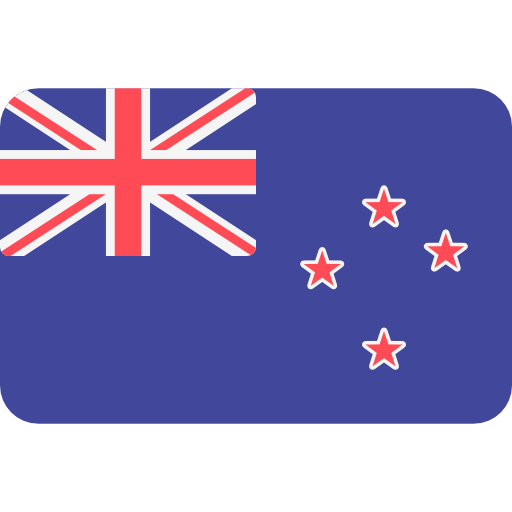Why Documentation Can Make or Break a Shipment
When Anil, a ceramicware exporter from Morbi, booked a container to the UK, he thought everything was in order. His products were packed, the invoice was ready, and the order had to reach before the Diwali sales window.
Two days before sailing, he received a call from his CHA: the Shipping Bill had been flagged for review due to an incorrect value declaration. The error delayed Let Export Order, the vessel cutoff was missed, and Anil paid two extra days of port storage.
This wasn’t a product issue. It was a documentation and compliance issue — the one area exporters often underestimate.
And in India’s fast-changing regulatory environment, a capable Customs House Agent (CHA) is no longer optional. They’re the difference between smooth export cycles and costly disruptions.
Why Export Documentation Matters More Than Ever
Export documentation is not just a list of papers needed to move cargo. Each document feeds into customs assessment, port processes, international regulations, bank settlements, and incentive claims. A single discrepancy — a mismatched HS code, incorrect weight, or missing permit — can hold back an entire shipment.
With newer digital customs systems, stricter scrutiny, and updated DGFT policies, exporters need documentation that is precise and compliant.
This is the foundation of what a skilled CHA manages on your behalf.
What Your CHA Should Handle — Complete, Practical Breakdown
1. Documentation Preparation and Accuracy Checks
Before anything is filed on ICEGATE, your CHA should verify every detail to ensure it aligns with customs requirements and the Foreign Trade Policy.
A strong CHA will:
-
Cross-check HS codes for accuracy and compliance
-
Review Commercial Invoice and Packing List for consistency
-
Ensure AD Code activation at the port of export
-
Check if any item requires DGFT or commodity-specific licensing
-
Verify correct measurement, weight, and product descriptions
-
Advise if additional certificates such as COO or phytosanitary documents are required
This step prevents questions from customs, unnecessary assessments, and last-minute panic. Many exporters discover discrepancies at the port gate — when it’s already too late. A proactive CHA prevents such scenarios.
2. Filing the Shipping Bill Correctly on ICEGATE
The Shipping Bill is the backbone of export clearance. It determines customs duties (if any), compliance checks, incentive eligibility, and examination requirements.
Your CHA should manage:
-
Selection of the correct Shipping Bill type (FOB, Drawback, RODTEP, EPCG, SEZ, DEEC, etc.)
-
Accurate declaration of invoice value and currency
-
Correct pairing of HS codes and incentive schemes
-
Uploading of supporting documents through E-Sanchit
-
Timely submission to avoid missing vessel or flight deadlines
When this is done right, customs assessment becomes predictable and faster. When it goes wrong, exporters face unexpected compliance questions, repeated queries, and higher chances of examination.
3. Coordination with Customs and Port Authorities
Once the Shipping Bill is submitted, the CHA steps into operational mode — managing the physical movement through the port.
A competent CHA handles:
-
Goods registration at the terminal or CFS
-
Customs examination and responding to officer queries
-
Arranging LEO (Let Export Order)
-
Coordinating with shipping lines or airlines
-
Ensuring container sealing and documentation alignment
-
Monitoring cutoff times for containers and cargo handover
This coordination is often invisible to exporters but determines how quickly the shipment leaves India. The CHA acts as the bridge between customs, shipping lines, transporters, and terminal staff.
4. Compliance Checks and Incentive Eligibility
Exporters often miss out on government benefits simply due to incorrect documentation.
Your CHA should ensure:
-
Accurate RODTEP declaration where applicable
-
Correct licensing declarations for restricted products
-
Compliance with any commodity-specific regulations
-
Documentation support for post-export incentive claims
-
Ensuring all mandatory fields in Shipping Bills are filled to qualify for DGFT benefits
Incorrect declarations do not just cause delays — they often lead to forfeiting incentives worth thousands to lakhs per shipment.
5. Preventing Penalties, Red Flags, and Costly Mistakes
Customs systems automatically flag irregular documentation. A trained CHA knows what triggers risk-driven assessment.
Your CHA helps avoid:
-
HS code mismatches
-
Incorrect weight or dimensions
-
Wrong FOB value declaration
-
Missing certificates
-
Seal number discrepancies
-
Under- or over-declaration issues
These errors can result in cargo being pulled for reassessment or examination, leading to inspection delays, demurrage, and storage fees.
Data & Insight Section
Average Export Clearance Time at India’s Major Ports (Indicative)
| Port | Average Clearance Time | Notes |
|---|---|---|
| Nhava Sheva (JNPT) | 32–48 hours | High volume, variable congestion |
| Mundra | 28–40 hours | Efficient for CFS-based movement |
| Chennai | 36–52 hours | Mixed cargo profile |
| ICD Tughlakabad | 30–45 hours | Rail-linked efficiency |
Meaning for exporters: A skilled CHA can help reduce clearance time by minimizing documentation errors — often bringing down delays by 20–30%.
Frequent Documentation Errors and Their Impact
| Error Type | Frequency | Impact |
|---|---|---|
| Incorrect HS Code | High | Examination, penalties, shipment hold |
| Invoice vs Shipping Bill mismatch | Medium | Customs query, re-filing |
| Missing certificates | Medium | Delayed clearance |
| Wrong weight/measurement | High | Additional examination and reassessment |
Interpretation: Most export delays are preventable with accurate CHA-managed documentation.
Real Export Mistake — And How It Was Avoided
A Delhi-based engineering exporter nearly faced a penalty when customs flagged a mismatch in the declared weight. Their CHA discovered that the packing team had used an outdated weight sheet. By correcting and re-uploading the supporting document quickly, the shipment avoided examination and moved out on the planned vessel.
This is the type of operational agility exporters need — and only a hands-on CHA provides it.
Humanized Business Stories
How a Mumbai Apparel Exporter Avoided a 3-Day Delay
By thoroughly checking the Packing List and correcting incomplete fabric composition details, the CHA prevented a customs query that would have pushed the shipment into the next vessel schedule.
How a Pune Auto-Parts Exporter Reduced Dwell Time
After missing two consecutive cutoffs due to documentation inconsistencies, the exporter switched to a more experienced CHA. Within a month, clearance times improved by 40% simply because filings were accurate and well-coordinated.
These stories show how CHA expertise directly affects profitability and customer satisfaction.
Conclusion — Why Choosing the Right CHA Matters
Exporting is no longer just about products and pricing. It’s about compliance, correct paperwork, and ensuring that your shipment meets every regulatory requirement from factory to ship or aircraft.
A capable CHA ensures that your documentation is accurate, your filings are correct, and your cargo moves without unnecessary hurdles.
In a competitive export landscape, a skilled CHA becomes your operational partner — helping you save time, reduce unexpected charges, and build trust with global buyers.
CTA — Cargo People Logistics
📞 +91 78350 06245
📧 Cha@cargopeople.com


 United Kingdom
United Kingdom
 Germany
Germany
 Argentina
Argentina
 Australia
Australia
 Canada
Canada
 New Zealand
New Zealand
